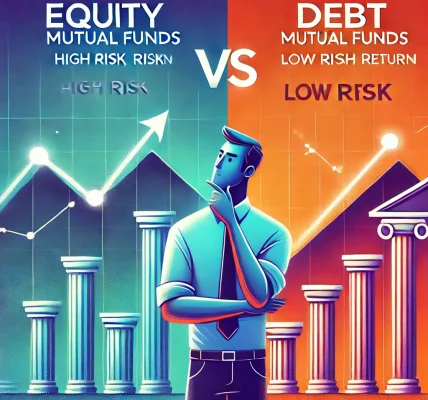- Directly through AMC (Asset Management Company) websites (Lower costs, more control)
- Mutual fund distributors or agents (Assistance but with extra charges)
- Online investment platforms (Convenient and often cost-effective)
Choose a reliable and SEBI-registered platform to ensure secure transactions.
Final Thoughts: Making an Informed Decision
Selecting the right mutual fund requires thorough research and a clear understanding of your financial goals, risk appetite, and investment horizon. By following this beginner’s checklist, you can make an informed decMutual funds are one of the most popular investment options for both beginners and seasoned investors. They offer diversification, professional management, and the potential for wealth creation over time. However, with thousands of mutual fund schemes available, choosing the right one can be overwhelming, especially for beginners.
This guide will help you understand the key factors to consider when selecting a mutual fund, ensuring that your investment aligns with your financial goals, risk appetite, and investment horizon.
1. Define Your Investment Goals
Before selecting a mutual fund, it is crucial to determine your financial goals. Ask yourself:
- Are you investing for short-term needs (1-3 years) or long-term wealth creation (10+ years)?
- Do you need funds for a specific purpose, such as a house, children’s education, or retirement?
- Are you looking for capital appreciation, regular income, or wealth preservation?
Your answers will help narrow down the type of mutual funds best suited for your objectives.
2. Assess Your Risk Appetite
Different mutual funds have varying levels of risk. Understanding your risk tolerance is essential before making an investment decision.
Types of Risk Appetite:
- Low-Risk Investors: Prefer stable returns and minimal fluctuations. Debt mutual funds or liquid funds may be ideal.
- Moderate-Risk Investors: Comfortable with some level of market fluctuations. Hybrid or balanced funds could be suitable.
- High-Risk Investors: Willing to take more risk for potentially higher returns. Equity mutual funds, sectoral funds, or small-cap funds might be preferable.
3. Understand Different Types of Mutual Funds
Mutual funds are classified based on asset allocation and investment strategy. The major categories include:
Equity Funds (Higher Risk, Higher Returns)
- Large-cap funds
- Mid-cap funds
- Small-cap funds
- Sectoral and thematic funds
Debt Funds (Lower Risk, Stable Returns)
- Liquid funds
- Short-term and long-term debt funds
- Corporate bond funds
Hybrid Funds (Balanced Risk, Mixed Returns)
- Aggressive hybrid funds
- Conservative hybrid funds
Choosing the right type depends on your goals and risk tolerance.
4. Compare Fund Performance and Returns
While past performance doesn’t guarantee future returns, analyzing historical data can help identify consistently well-performing funds.
Key Metrics to Consider:
- 5-Year and 10-Year CAGR (Compounded Annual Growth Rate)
- Consistency in Returns (Avoid funds with extreme fluctuations)
- Performance in Different Market Conditions (Check how the fund performed during market downturns)
5. Check the Fund Expense Ratio
The expense ratio is the fee charged by the fund house to manage your investments. It directly impacts your returns.
- Lower expense ratios mean higher net returns for investors.
- Actively managed funds usually have a higher expense ratio compared to passive index funds.
It is advisable to choose a fund with a reasonable expense ratio to maximize your returns over time.
6. Evaluate Fund Manager’s Track Record
A fund’s performance is significantly influenced by its fund manager. A good fund manager:
- Has a proven track record of managing funds successfully.
- Adopts a disciplined and research-backed investment approach.
- Navigates market volatility effectively.
Check the fund manager’s experience, investment style, and past performance before investing.
7. Consider Exit Load and Lock-in Period
Many mutual funds charge an exit load if you redeem your investment before a certain period.
- Short-term investors should prefer funds with low or zero exit loads.
- Tax-saving funds (ELSS) have a 3-year lock-in period, which is non-negotiable.
Understanding these charges will help you avoid unnecessary costs.
8. Tax Implications of Mutual Funds
Different types of mutual funds have different tax treatments:
- Equity Mutual Funds: Gains up to Rs. 1 lakh per year are tax-free; beyond that, 10% Long-Term Capital Gains (LTCG) Tax applies if held for more than a year.
- Debt Mutual Funds: Gains are taxed as per individual income tax slab if redeemed within 3 years; after 3 years, LTCG tax is 20% with indexation benefits.
Consider tax implications when selecting a mutual fund to optimize post-tax returns.
9. Invest Through SIP or Lump Sum?
Mutual fund investments can be made in two ways:
- Systematic Investment Plan (SIP): Investing a fixed amount regularly reduces the impact of market volatility and benefits from rupee cost averaging.
- Lump Sum Investment: Suitable for investors who have a large amount of capital and can invest at an opportune market level.
SIPs are recommended for beginners as they instill financial discipline and reduce investment risk.
10. Choose the Right Investment Platform
Mutual fund investments can be made through various platforms:ision and maximize your investment potential.
Key Takeaways:
- Clearly define your financial goals and risk tolerance.
- Choose the right type of mutual fund based on your needs.
- Compare fund performance, expense ratio, and fund manager’s track record.
- Be aware of tax implications, exit loads, and lock-in periods.
- Decide between SIP or lump sum investment based on your financial situation.
- Use a trusted and secure investment platform.
By keeping these factors in mind, you can build a strong, diversified portfolio that aligns with your long-term financial aspiration




